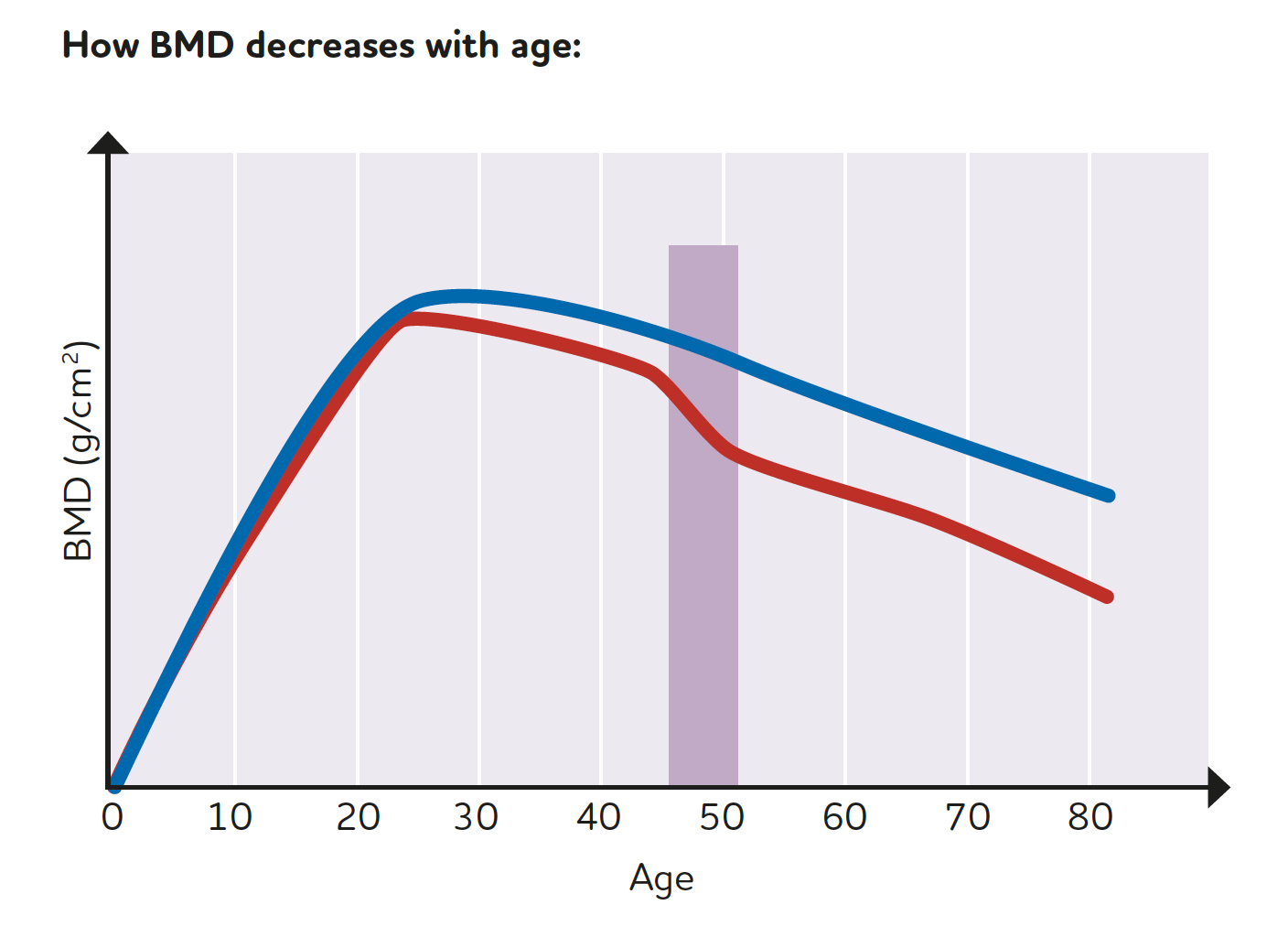Are you prone to Osteoporosis?
It’s possible. One in three women and one in five men will suffer a fracture in their lifetime as a result of osteoporosis. Osteoporosis is a condition in which bone mass is reduced and bone tissue deteriorates, leading to a more fragile skeleton and an increased risk of fracture.
A bone’s mass is measured by its bone mineral density (BMD), which is a measure of how porous it is. A bone that is osteoporotic has lost density and therefore has a lower BMD than a bone that is healthy.
How do you know if you have low bone density?
Bone loss usually occurs gradually over the years without symptoms. This is why osteoporosis is called a silent disease. A fracture is usually the first sign of the disease, and fractures typically occur in the hip, spine or wrist. A curved back or loss of height may be other signs.
How BMD decreases with age:

Risk factors for osteoporosis
There are several factors that increase the risk of osteoporosis. They are gender and age, with women and older people more likely to develop the disease.
In women, oestrogen plays a decisive role. As oestrogen levels decrease during menopause, bone density decreases more rapidly, with the greatest decline occurring in the first ten years after menopause.
Other risk factors include heredity, sedentary living, smoking, and excessive alcohol consumption. Those with eating disorders or low calcium intake are also at risk. Fractures can also be affected by medical conditions such as liver disease and rheumatism.

How common is osteoporosis?
It is estimated that more than 200 million people worldwide are diagnosed with osteoporosis. In the US and Europe, 1 in 3 women and 1 in 5 men over the age of 50 are at risk of developing osteoporosis.
Lifestyle matters
Diet and physical activity are two of the most important factors in preventing osteoporosis in your daily life. It is important to consume a diet rich in calcium and vitamin D in order to build strong bones. These nutrients can be found in dairy products, fruits and vegetables. Fatty fishes, like salmon, contain calcium, vitamin D and omega-3, all of which are beneficial for your bones.
Active lifestyles have also been shown to prevent osteoporosis. While activities such as jogging and tennis are good high-impact weight-bearing forms of exercise, taking a walk also has a positive effect on your bone health.

BioGaia Osfortis – A new alternative
BioGaia Osfortis is a new, natural product for bone health. It is a combination of the probiotic strain Limosilactobacillus reuteri (formerly known as Lactobacillus reuteri) ATCC PTA 6475 and vitamin D. Vitamin D contributes to the maintenance of normal bones.
